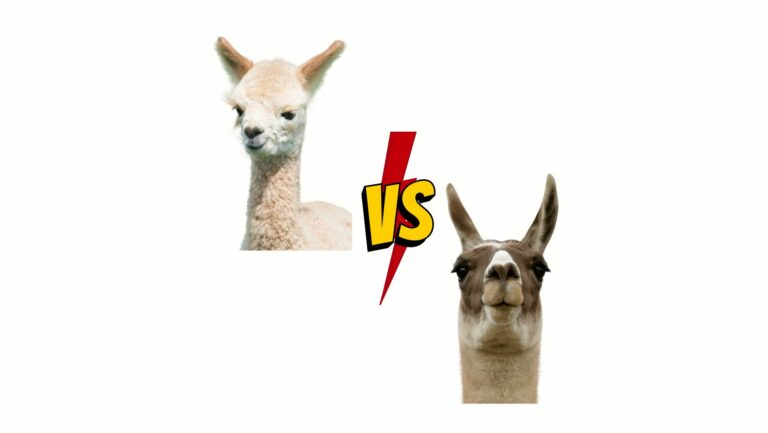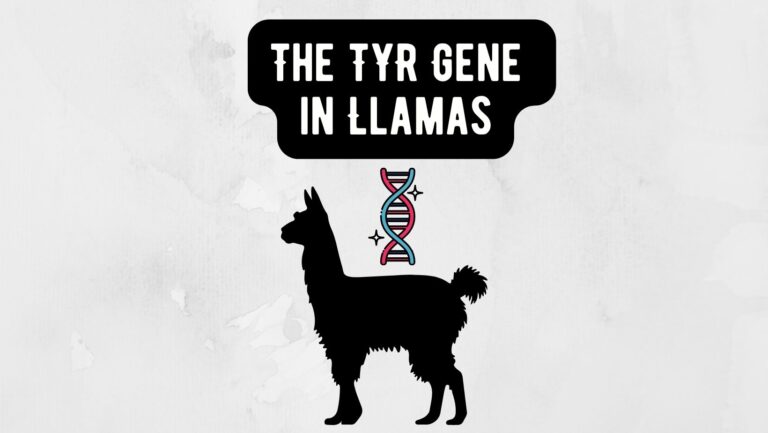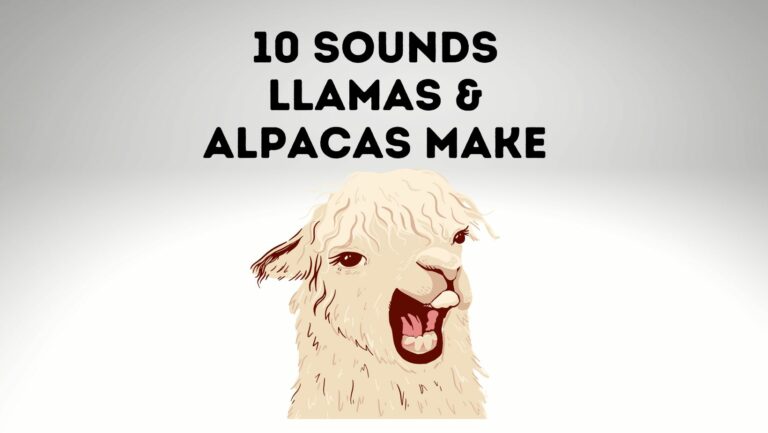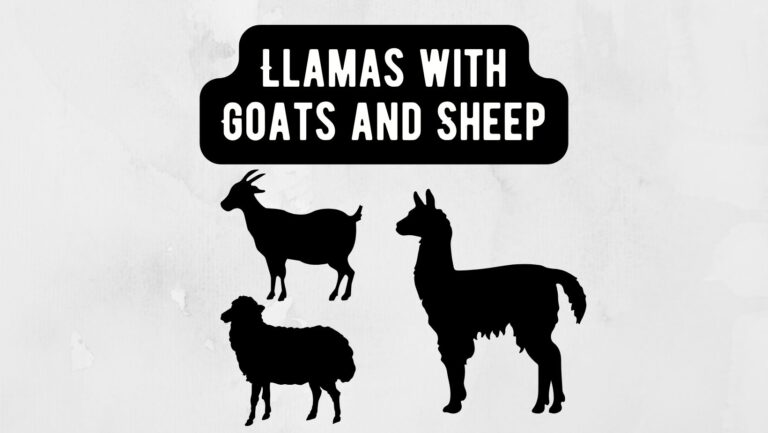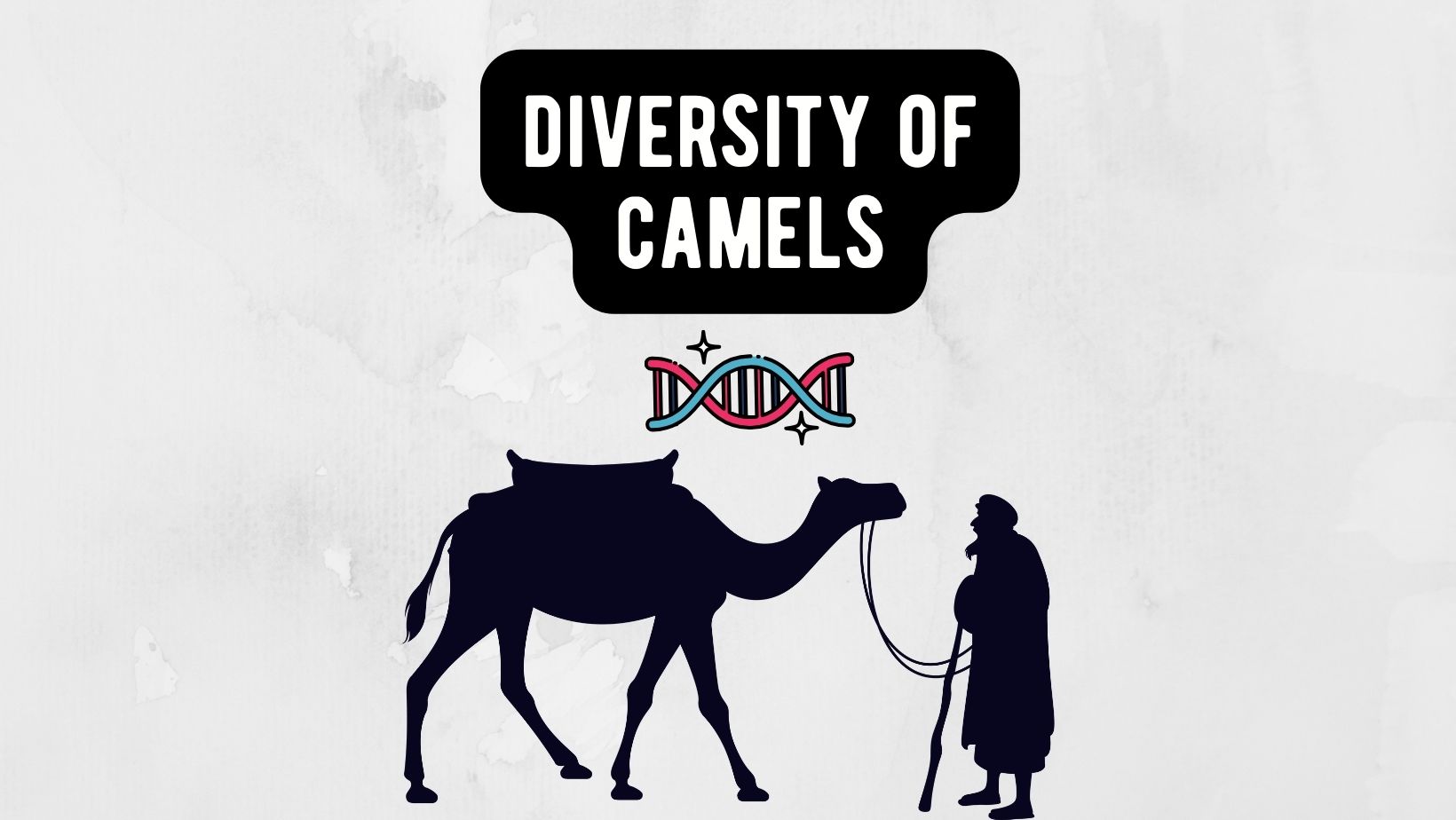
Camels, known as the “ships of the desert,” have been integral to human societies for centuries, providing transportation, food, and other essential resources. Among the various camel types, each species and subspecies possesses unique characteristics that make them well-adapted to different environments. This article explores the diverse world of camels, focusing on key types such as the Dromedary, Bactrian Camels, Wild Bactrian Camel, Cama Camels, Hybrid Camels, Camelus knoblochi, and Camelus thomasi.
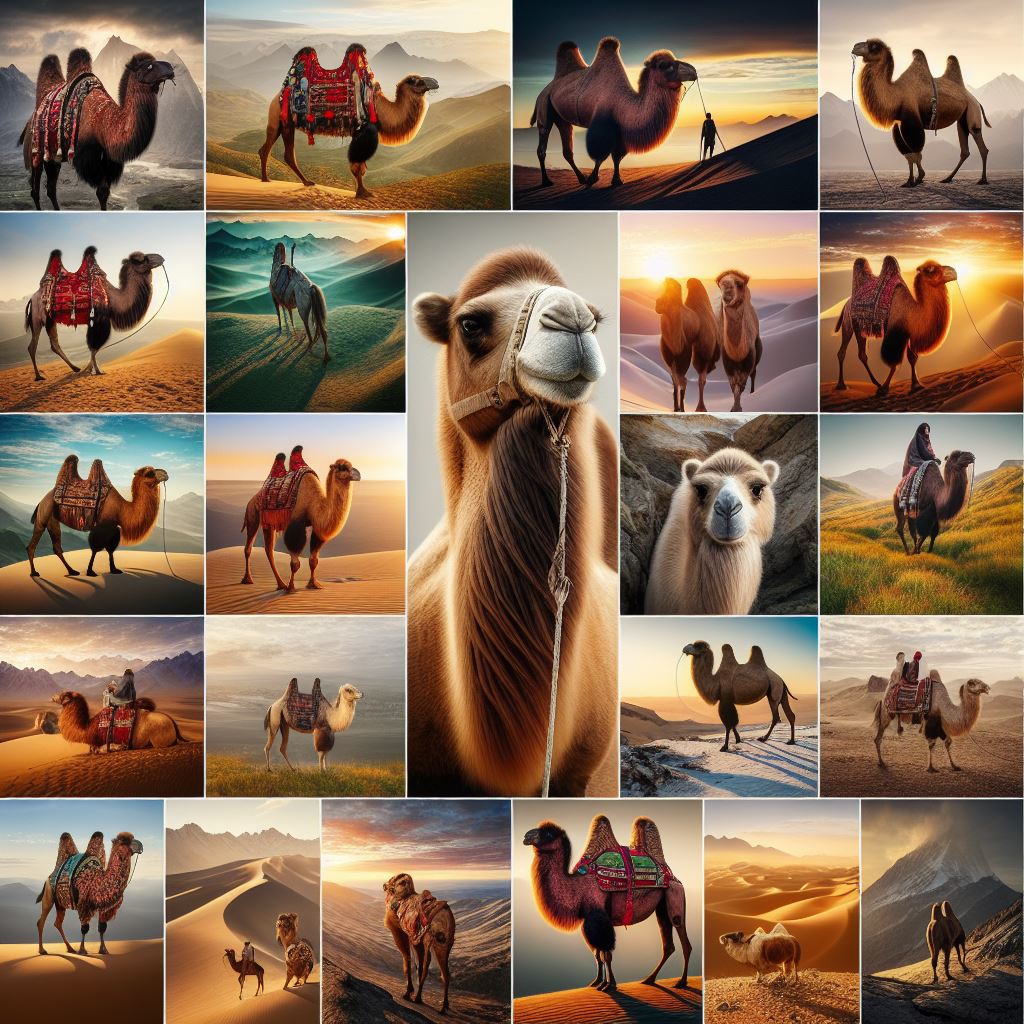
Diversity of Camels: Physical Characteristics
Humps
One of the most recognizable features of camels is their humps, which serve as reservoirs of fat that provide energy during periods of food scarcity. Contrary to popular belief, the humps do not store water but instead serve as a source of nutrition when food is scarce. Dromedary camels have a single hump, while Bactrian camels have two humps.
Fur and Skin
Camels have thick fur and leathery skin that help protect them from extreme temperatures and sun exposure. The fur also acts as insulation, keeping camels warm in cold weather and preventing excessive heat absorption in hot climates. In addition, camels have specialized sweat glands that regulate their body temperature by dissipating heat through evaporation.
Adaptations for Desert Life
Camels have evolved various adaptations that enable them to thrive in desert environments. These include:
- Water Conservation: Camels are highly efficient at conserving water and can survive for extended periods without drinking. They can reabsorb moisture from their nasal passages when exhaling and have concentrated urine to minimize water loss.
- Fat Storage: The humps of camels store fat, which can be metabolized to provide energy during times of food scarcity. This adaptation allows camels to survive in regions with scarce or sporadic food sources.
- Foot Pads: Camels have large, cushioned foot pads that enable them to walk on sand without sinking. These pads also provide traction and protect the camel’s feet from rough terrain.
Behavior and Social Structure
Camels are social animals exhibiting complex behaviors and hierarchies within their herds. In the wild, they form cohesive groups led by a dominant male known as the “bull.” Female camels, known as “cows,” typically form smaller groups with their offspring. Camels communicate through vocalizations, body language, and scent marking, allowing them to coordinate group movements and maintain social bonds.
Habitats and Distribution
Camels are found in diverse habitats ranging from arid deserts to grasslands, steppes, and mountainous regions. Dromedary camels are native to the Middle East, North Africa, and parts of South Asia, while Bactrian camels inhabit the deserts of Central Asia, including Mongolia, China, and Kazakhstan. Domesticated camels are also found in many other parts of the world, where they are used for transportation, milk production, and meat.
Cultural Significance and Human Uses
Throughout history, camels have played crucial roles in the lives of humans, particularly in regions where they are native or have been introduced. They have served as valuable pack animals, providing transportation and carrying heavy loads across long distances. Camels are also used for milk production, wool, and meat, providing essential resources for nomadic and pastoral communities.
In addition to their practical uses, camels hold cultural and religious significance in many societies. They are revered for their strength, endurance, and resilience, often symbolizing wealth, status, and hospitality. Camels feature prominently in art, literature, and folklore, reflecting their enduring impact on human culture.
Dromedary (Camelus dromedarius)
The dromedary, also known as the dromedary camel or Arabian camel, is a large even-toed ungulate mammal native to the arid and semi-arid regions of Western Asia and North Africa. It is the tallest of the three camel species, with a single hump on its back.
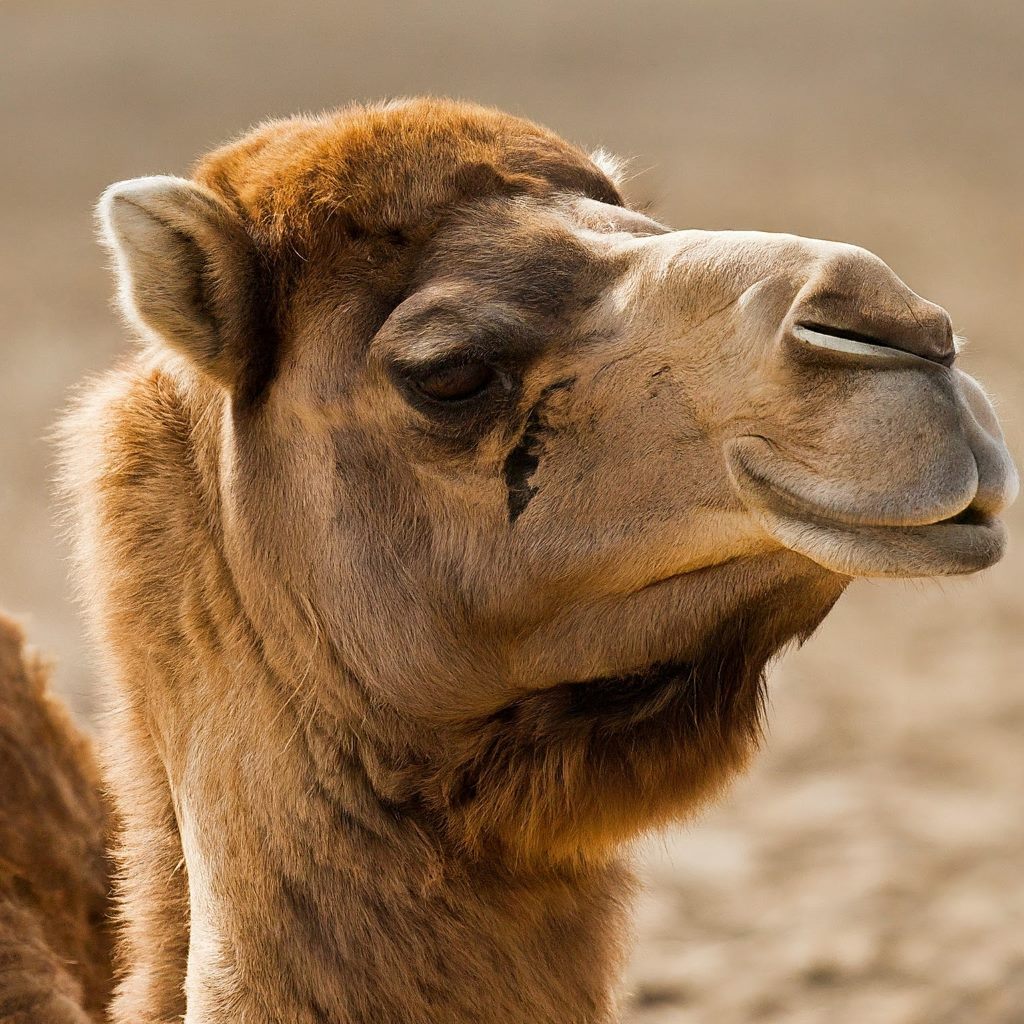
Some key characteristics of the dromedary:
- Size: Males stand 1.8–2.4 meters (5.9–7.9 ft) tall at the shoulder, while females are 1.7–1.9 meters (5.6–6.2 ft) tall. They can weigh between 400 and 600 kg (880 and 1,320 lb) for males and 300 and 540 kg (660 and 1,190 lb) for females.
- Hump: The single hump stores fat, which provides energy during times of food scarcity.
- Coat: The coat is short and sandy-colored in the summer and thicker and woolier in the winter.
- Legs: Their long legs are well-adapted for walking long distances in desert environments.
- Feet: Their wide feet help them distribute their weight on sand and prevent them from sinking.
- Diet: They are herbivores and can eat a variety of plants, including leaves, shrubs, and grasses. They can also survive for long periods without water, obtaining moisture from the plants they eat.
- Behavior: They are social animals and live in herds of up to 30 individuals. They are also known for their intelligence and trainability.
Dromedaries have been domesticated for thousands of years and are used for a variety of purposes, including transportation, milk production, meat, and wool. They are an important part of the culture and economy of many countries in the Middle East and North Africa.
Bactrian Camels (Camelus bactrianus)
Bactrian Camels (Camelus bactrianus), also known as Mongolian camels or two-humped camels, are large even-toed ungulates native to the steppes of Central Asia. They are the largest living camels and are easily distinguished by their two distinctive humps on their backs, which store fat that provides energy during times of scarcity.
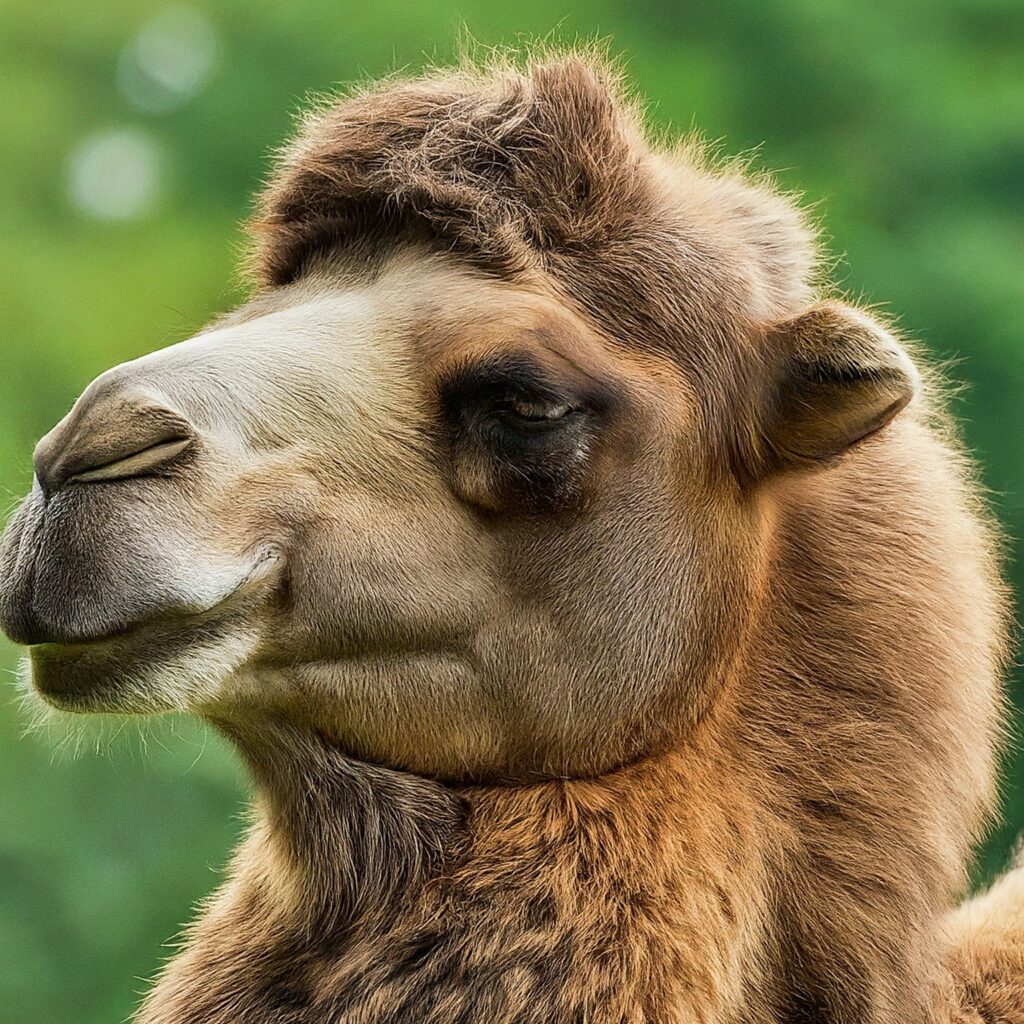
Some key characteristics of the Bactrian Camel:
- Size: Males stand 1.8–2.3 meters (5.9–7.5 ft) tall at the shoulder, while females are 1.6–1.8 meters (5.2–5.9 ft) tall. They can weigh between 600 and 1,000 kg (1,320 and 2,200 lb) for males and 450 and 800 kg (990 and 1,760 lb) for females.
- Humps: The two humps store fat, which provides energy during times of food scarcity.
- Coat: The coat is thick and shaggy in the winter and sheds in the summer, revealing a shorter, finer coat underneath.
- Legs: Their long legs are well-adapted for walking long distances in harsh environments.
- Feet: Their wide feet help them distribute their weight on sand and prevent them from sinking.
- Diet: They are herbivores and can eat a variety of plants, including tough, salty vegetation that other animals cannot digest. They can also survive for long periods without water, obtaining moisture from the plants they eat.
- Behavior: They are social animals and live in herds of up to 15 individuals. They are known for their resilience and ability to withstand harsh conditions.
Bactrian Camels have been domesticated for thousands of years and are used for a variety of purposes, including transportation, milk production, meat, and wool. They are an important part of the culture and economy of many countries in Central Asia.
Some additional interesting facts about Bactrian Camels:
- They can close their nostrils to keep out sand and dust during sandstorms.
- They have thick eyelashes that help to protect their eyes from the sun and wind.
- They can travel up to 50 kilometers (31 miles) per day.
- They are listed as “Near Threatened” on the IUCN Red List due to habitat loss and hunting.
Wild Bactrian Camel (Camelus ferus)
The Wild Bactrian Camel (Camelus ferus) is a critically endangered species of camel native to the Gobi Desert of China and Mongolia. It is the only truly wild camel species remaining in the world, and is distinct from the domesticated Bactrian camel (Camelus bactrianus) by its smaller size, thinner coat, and more widely spaced humps.
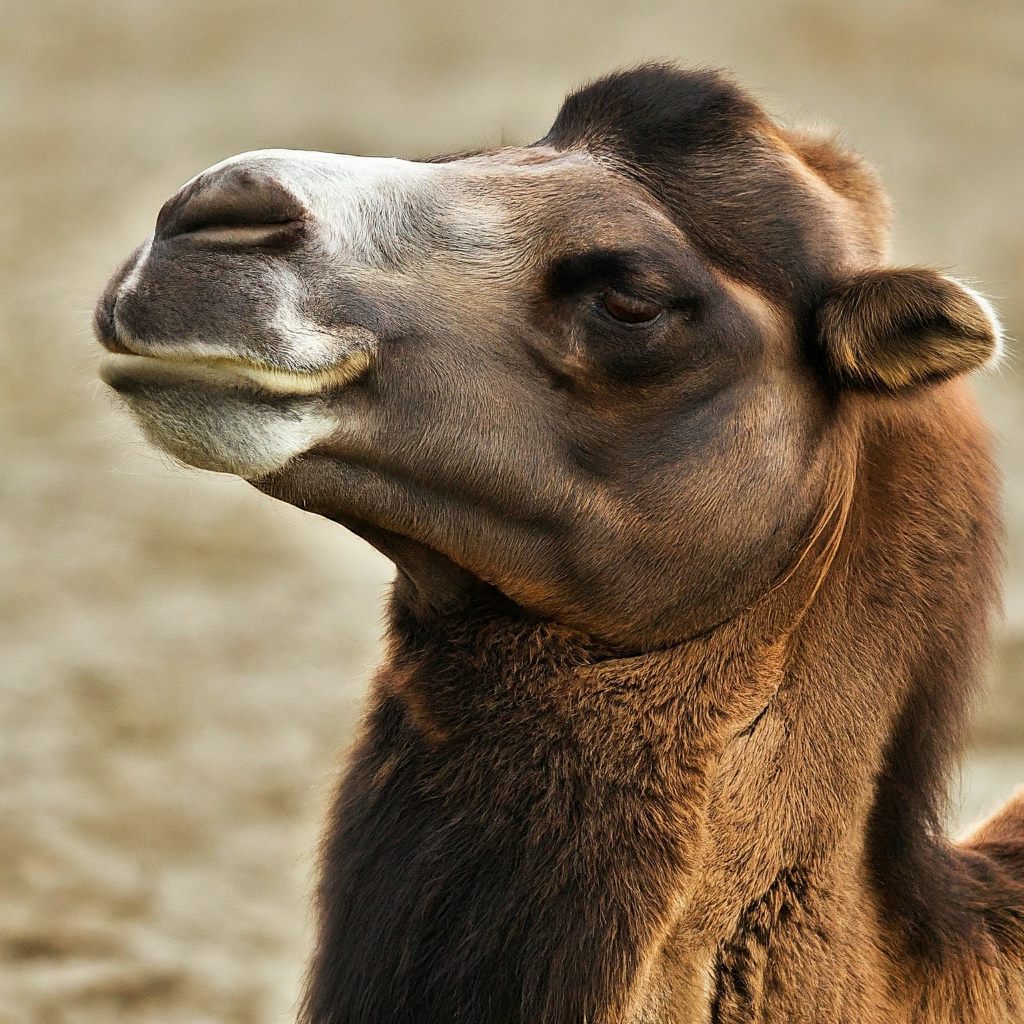
Some key characteristics of the Wild Bactrian Camel:
- Size: Smaller than their domesticated counterparts, males stand around 1.8-2.1 meters (5.9-6.9 ft) tall at the shoulder, while females are slightly shorter. They weigh between 600-800 kg (1,320-1,760 lb).
- Humps: Two distinctive humps store fat for energy during harsh winters and scarce food availability.
- Coat: Thinner and lighter colored than domesticated camels, typically ranging from sandy brown to reddish-brown in summer and growing thicker and woolier in winter.
- Legs: Long and slender, well-adapted for navigating the rugged terrain of the Gobi Desert.
- Feet: Wide and flat, helping them distribute their weight on sand and preventing them from sinking.
- Diet: Herbivores, feeding on a variety of desert plants, including shrubs, grasses, and even thorny vegetation. They are efficient at conserving water and can survive for long periods without drinking.
- Behavior: Highly social animals, living in herds of up to 12 individuals. They are known for their resilience and ability to withstand extreme desert conditions.
Sadly, the Wild Bactrian Camel is facing several threats, including habitat loss due to mining and infrastructure development, competition with livestock for grazing resources, and illegal hunting. As of 2023, there are estimated to be fewer than 1,000 individuals remaining in the wild, making them critically endangered.
Conservation efforts are underway to protect the remaining wild population, including establishing protected areas, promoting sustainable grazing practices, and raising awareness about the importance of this unique species.
Cama Camels
The Cama is a hybrid camel, resulting from the breeding of a male dromedary camel (Camelus dromedarius) and a female llama (Lama glama). It was first successfully created in 1998 at the Camel Reproduction Centre in Dubai through artificial insemination.
Here’s what we know about the Cama:
- Appearance: The Cama is intermediate in size between a camel and a llama, lacking the characteristic hump of a camel. It has ears and a tail that are also intermediate between the two parent species, and its legs are longer than those of a llama.
- Characteristics: Despite being a hybrid, the Cama is sterile, meaning they cannot reproduce naturally. This is a common phenomenon in some interspecies hybrids due to genetic incompatibilities.
- Purpose: The initial purpose of creating the Cama was to combine the desirable traits of both parent animals. Camels are known for their strength and ability to thrive in harsh environments, while llamas are prized for their wool production and gentle temperament. However, the Cama hasn’t gained widespread popularity as a working animal.
- Rarity: Camas are still relatively rare, and little information is available about their long-term health, behavior, or suitability for specific uses.
Here are some additional points to consider:
- The creation of hybrid animals raises ethical concerns, and the potential welfare implications for the offspring must be carefully considered.
- The long-term viability of hybrid populations also needs to be evaluated, as sterility can hinder their ability to sustain themselves naturally.
Overall, the Cama is an interesting example of human intervention in animal breeding, but it’s important to be aware of the ethical considerations and potential challenges associated with such practices.
Camelus knoblochi:
Camelus knoblochi was an extinct species of camel that roamed the Eurasian continent during the Pleistocene epoch, ranging from 3.9 million to 541 thousand years ago. It was one of the larger Old World camels of its time, standing over 3 meters (9.8 ft) tall and weighing around 1 ton.
Some key characteristics of Camelus knoblochi:
- Size: Large, standing over 3 meters tall and weighing around 1 ton.
- Habitat: Steppe and forest-steppe environments across Eurasia.
- Diet: Primarily grazed on grasses.
- Distribution: Found in Eastern Europe, western Siberia, southern and western Transbaikalia, northern and northeastern China, and the Altai Mountains.
- Extinction: The reasons for its extinction remain unclear, but it likely coincided with climatic changes and competition from other herbivores.
Camelus thomasi
Camelus thomasi, also known as Thomas’s camel, was another extinct camel species that existed during the Early to Mid Pleistocene in North Africa. It was primarily found in Tighennif (Ternifine), Algeria, with some fossils from Israel initially attributed to this species but now considered a separate one.
Some key characteristics of Camelus thomasi:
- Size: Larger than any living camel species.
- Distinguishing features:
- Pachyostosis, especially in the mandible.
- Broad molars with strong styles.
- Unique cranial features.
- Relationship to other camels: While initially thought to be an ancestor of dromedaries or Bactrian camels, recent studies suggest it may not be closely related to any living species.
- Diet: Likely fed on various plants, similar to other camels.
Hybrid Camels
Hybrid camels are the result of breeding different camel species, most commonly:
Here’s an overview of some common hybrid camels:
1. Tülu (Dromedary x Bactrian):
- The most common hybrid, resulting from a male Bactrian and female Dromedary.
- Larger than both parent species, with one large hump.
- Used as draft animals and in camel wrestling.
- It can be further backcrossed with either parent species.
2. B1 Backcross:
- Offspring of a Tülu female and a Bactrian male.
- Has two humps, faster than a Bactrian, and stronger than a Dromedary.
- Suitable for mountainous terrain and harsh climates.
3. B1 Backcross Dromedary:
- Offspring of a Tülu female and a Dromedary male.
- Slightly stronger than a Dromedary, but rare.
Ethical Considerations:
Creating hybrid animals raises ethical concerns, including:
- Potential welfare issues: Offspring may face health problems or adaptation challenges due to genetic incompatibilities.
- Unintended consequences: Introducing new species into an ecosystem can disrupt the natural balance.
- Exploitation of animals: Hybrid creation might be driven by commercial interests rather than genuine conservation efforts.
Overall, hybrid camels represent a complex topic with biological and ethical considerations. While they can offer some potential benefits, it’s crucial to weigh these against the potential risks and ensure responsible practices are followed.
Conclusion
In conclusion, camels are remarkable creatures with unique adaptations that enable them to thrive in some of the world’s most challenging environments. From their specialized physiology to their complex social behaviors, camels are truly fascinating animals that have captured the imagination of people around the globe. As we continue to learn more about these extraordinary creatures, we gain a deeper appreciation for their role in shaping natural ecosystems and human societies.
Frequently Asked Questions (FAQs) about Camels
Q: How many species of camels are there?
A: There are two main species of camels: the Dromedary (one-humped camel) and the Bactrian Camel (two-humped camel).
Q: What is the purpose of the humps on camels?
A: The humps on camels serve as a storage reservoir for fat, not water, as commonly believed. This stored fat can be converted into energy when food and water are scarce.
Q: Where are camels native to?
A: Camels are native to the arid regions of the Middle East and North Africa for Dromedaries and Central Asia for Bactrian Camels.
Q: Can camels survive in cold climates?
A: Bactrian Camels are adapted to cold climates and can survive as low as -29°C (-20°F). Dromedaries are better suited to hot desert environments.
Q: How fast can camels run?
A: Camels can reach up to 40 miles per hour (64 km/h) for short bursts, making them surprisingly fast runners.
Q: What is the gestation period of a camel?
A: The gestation period for camels is around 13 to 14 months, depending on the species.
Q: Are there any wild camels left?
A: The Wild Bactrian Camel is the only truly wild camel species. Unfortunately, it is critically endangered, with a small population surviving in remote desert areas of Central Asia.
Q: Can camels drink seawater?
A: While camels are known for their ability to endure long periods without water, they cannot drink seawater. Their bodies are not adapted to filter out the salt effectively.
Q: What is the lifespan of a camel?
A: Camels generally live for around 40 to 50 years, depending on health, diet, and living conditions.
Q: Are there any camel hybrids?
A: There are camel hybrids, such as the Cama (Dromedary-Llama hybrid). These hybrids are often created in captivity for scientific and genetic diversity purposes.
Q: Are there any extinct camel species?
A: Yes, there are extinct camel species, including Camelus knoblochi and Camelus thomasi, known from fossil records in North America.
Q: What are the economic uses of camels?
A: Camels are used for transportation, providing milk, meat, leather, and wool. They have been essential to trade and travel in many arid regions.
Q: How do camels protect themselves from predators?
A: Camels can kick and bite as a defense mechanism. Their strong, muscular legs make them formidable opponents against potential threats.
Q: Can camels adapt to different diets?
A: Camels are known for their ability to eat a variety of vegetation, including thorny plants, making them well-suited to arid environments with limited food resources.
Q: Are camels social animals?
A: Yes, camels are social animals that often travel in groups. They display complex social structures and are known to form strong bonds with other camels.
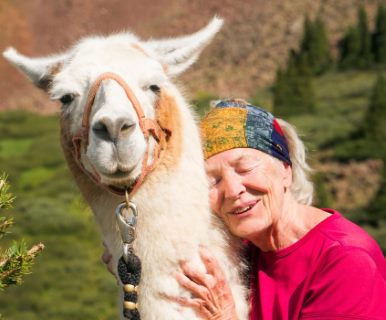
Hi, I am Dale. My husband and I bought our first llama, an 18-month-old male llama, Pumpernickel, in 1984. Since then, they are evergrowing; LlamaWeb is intended to provide information about llamas for people interested in these South American camelids.

